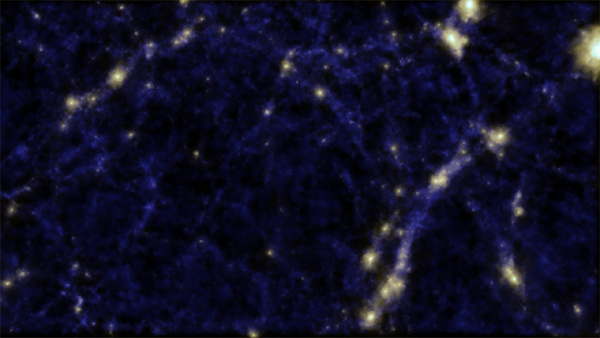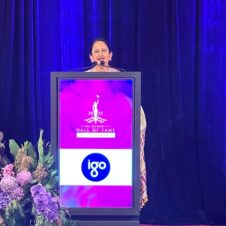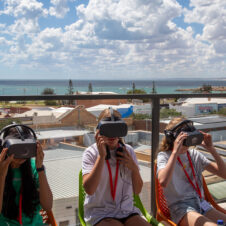These aren’t the voids you’re looking for
Astronomers find faint strings of galaxies inside empty space
Australian astronomers have shown galaxies in the vast empty regions of the Universe are actually aligned into delicate strings in research published today in the Monthly Notices of the Royal Astronomical Society.
A team of astronomers based at The University of Western Australia node of the International Centre for Radio Astronomy Research (ICRAR) has found short strings of faint galaxies in what were previously thought to be extremely empty parts of space.
The Universe is full of vast collections of galaxies that are arranged into an intricate web of clusters and nodes connected by long strings. This remarkably organized structure is often called the ‘cosmic web’, with busy intersections of galaxies surrounding vast spaces, empty of anything visible to us on Earth.
“The spaces in the cosmic web are thought to be staggeringly empty,” said Dr Mehmet Alpaslan, who led the research. “They might contain just one or two galaxies, as opposed to the hundreds that are found in big clusters.”
These huge, empty regions are called voids, and for years, astronomers have been trying to understand the small population of galaxies that inhabit them.
Using data from the Galaxy and Mass Assembly (GAMA) survey, Alpaslan and his colleagues found that the small number of galaxies inside these voids are arranged in a new way never seen before.
“We found small strings composed of just a few galaxies penetrating into the voids, a completely new type of structure that we’ve called ‘tendrils’,” said Alpaslan.
To discover tendrils, the GAMA team created the largest ever galaxy census of the southern skies using observations from the Anglo-Australian Telescope in NSW, Australia.
“Our new catalogue has looked deeper into space and mapped each patch of sky up to ten times to make sure it’s as thorough as possible,” said Dr Aaron Robotham from The University of Western Australia node of ICRAR.
“We weren’t sure what we’d find when we looked at voids in detail, but it was amazing to find so many of these tendrils lurking in regions that have previously been classified as empty,” said Robotham.
“This means that voids might be much smaller than we previously thought, and that galaxies that were previously thought to be in a void might just be part of a tendril,” said Alpaslan.
The GAMA team plan to catalogue more tendrils for further study as their detailed map of the Universe expands.
Further Information
ICRAR is a joint venture between Curtin University and The University of Western Australia that receives funding from the State Government of Western Australia. Mehmet Alpaslan is a PhD candidate at St Andrews University, Scotland and is supervised by Professor Simon Driver and Dr Aaron Robotham at The University of Western Australia node of ICRAR.
The Galaxy and Mass Assembly (GAMA) survey is an international collaboration to map the Universe led by Professor Simon Driver at ICRAR.
GAMA website: http://www.gama-survey.org/
Visuals:

A simulation of the ‘Cosmic Web’ showing clusters of galaxies and a void in the middle of the image, where Dr Alpaslan and team discovered tendrils of galaxies. Credit: Cui, Newton and Power (ICRAR), Cunnama (UWC).
The Galaxy and Mass Assembly catalogue is a detailed map of the Universe showing where galaxies are in 3D. This simulated flythrough shows the real positions and images of the galaxies that have been mapped so far. Distances are to scale, but the galaxy images have been enlarged for your viewing pleasure. Credit: Made by Will Parr, Dr. Mark Swinbank and Dr. Peder Norberg (Durham University) using data from the SDSS and the GAMA surveys. This work was supported by the Ogden Trust, STFC and the Royal Society. Download the video (mp4, 70MB). Other videos and formats available.
Contacts
Dr Mehmet Alpaslan (Timezone: US Pacific Standard Time, GMT-8)
PhD Graduate – St Andrews University
M: +1 702 848 97 28
E: mehmet.alpaslan@icrar.org
Dr Aaron Robotham (Timezone: Australian Western Standard Time, GMT+8)
ICRAR – UWA
Ph: +61 8 6488 5564
E: aaron.robotham@icrar.org
Kirsten Gottschalk (Timezone: Australian Western Standard Time, GMT+8)
Media Contact, ICRAR
Ph: +61 8 6488 7771
M: +61 438 361 876
E: kirsten.gottschalk@icrar.org


